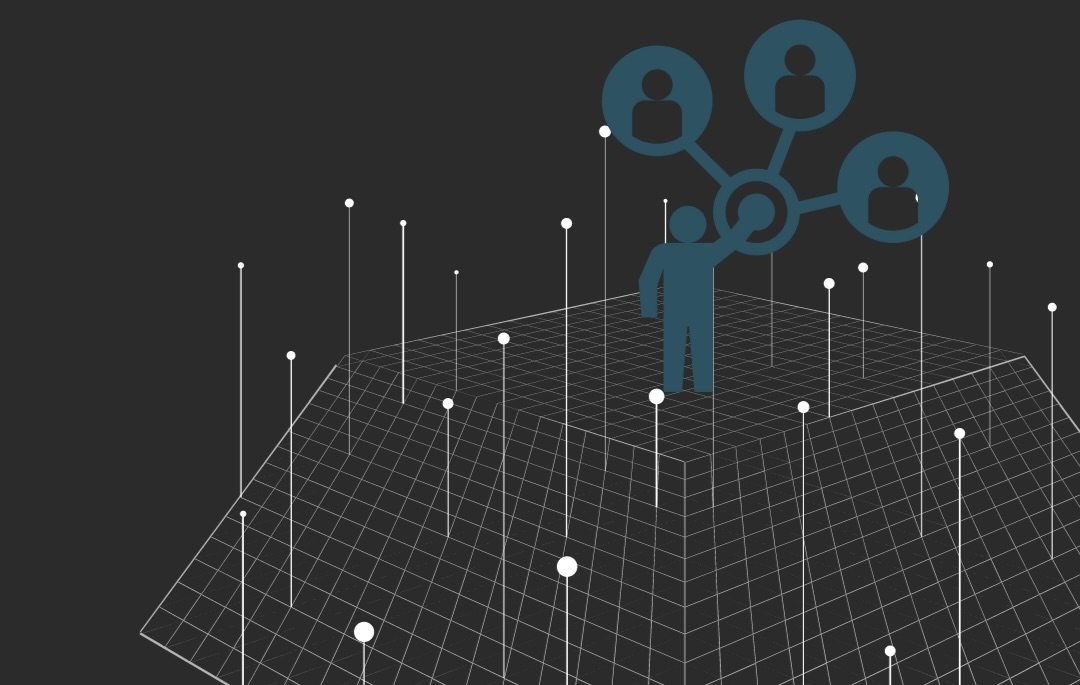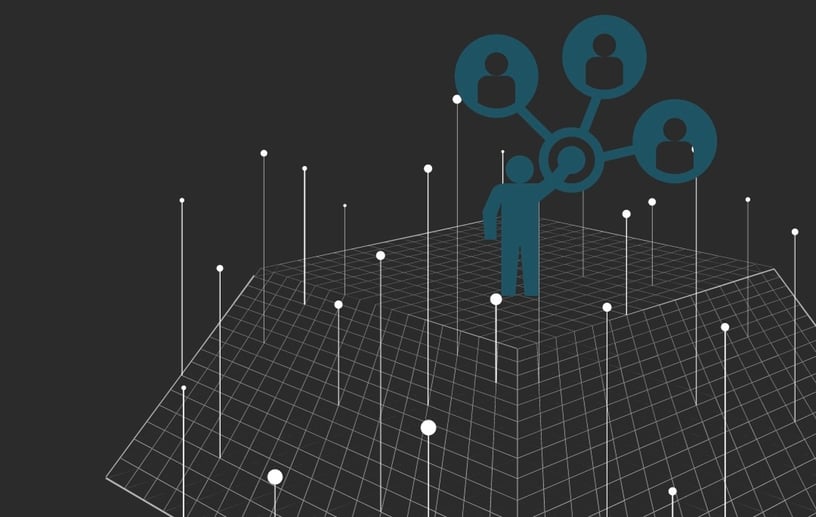
From data to action with CDP - Connect with a Customer Data Platform
In the digital age where customer data is more valuable than ever, Customer Data Platforms (CDPs) play a crucial role in a company's ability to understand, engage, and serve their customers in a profound manner. But what is a CDP, and how can it revolutionize your approach to customer engagement and data management?
You can hardly avoid having heard of Customer Data Platforms and CDP in recent years - or at least, you've made an effort! It's something that has come to the forefront in many places, and for good reason. A CDP can, in several ways, strengthen a business. And who wouldn't want that?
CDP stands for Customer Data Platform, and it is essentially a platform that makes it easier to manage all the customer data you collect, so you can effectively use it to enhance your customer experience.
When you gather information from various sources, including websites, social media, emails, and transactions, a CDP can become the crucial factor and the heart of your company's data ecosystem. Integrating and centralizing all customer data is a strategic decision that can empower a company looking to achieve success in a competitive business environment.
This consolidation creates a coherent and comprehensive customer view, which, among other things, allows you to better understand your customers' behavior, preferences, and needs. Furthermore, it enables more efficient marketing, as you can target campaigns based on customer behavior and preferences. It helps you harness customer data to the fullest and achieve better results in terms of increased revenue and customer satisfaction.
The CDP is not just a technical tool; it is a strategic resource that ensures data-driven success in the modern business world. It is an investment that can enhance customer insights, personalization capabilities, and data-driven decision-making. Effective and timely decision-making is a crucial component in business when proactive responses to market changes are required.
What is a CDP (Customer Data Platform)?
Perhaps you are inclined to ask, "Isn't a CDP the same as a CRM?" And no, in short, your CRM (Customer Relationship Management) focuses on your company's relationship with individual customers, typically to support your sales team, while a CDP (Customer Data Platform) is built to specifically support marketing, which aims to connect with multiple customers at once.
But what is a CDP, then?
A Customer Data Platform is a centralized software solution that revolutionizes the way businesses manage and leverage their customer data. With a CDP, companies can collect, organize, and analyze first-party customer data from various sources, including websites, social media, email marketing, transactions, and customer support. What makes the CDP particularly powerful is its ability to create a comprehensive and coherent customer view from all this data. This means that companies can build detailed customer and user profiles that provide deep insights into their behavior, preferences, and needs across all systems.
This insight opens the door to hyper-personalized marketing and customer engagement. Companies can deliver targeted messages and offers tailored to each customer, leading to increased satisfaction and higher conversion rates.
It may seem a bit complex, so let's take an example. You collect data from your point-of-sale (POS) system in your physical store and from visitors to your online store. A CDP ensures that the data is standardized according to specific rules, helping identify your customers across all their touchpoints. You can then send this knowledge to, for example, an email system to send out specific emails that match your subscribers' points of interest.
So, a CDP is beneficial for your marketing team.
However, it can also help you comply with data protection regulations and ensure that customer data is handled securely and in accordance with the law. This is particularly crucial today, where data security and privacy protection have become decisive factors in consumer trust.
In short, a Customer Data Platform allows companies to fully utilize their customer data, enhance the customer experience, and increase the efficiency of their marketing efforts.
What are the advantages of investing in a CDP (Customer Data Platform)?
An investment in a CDP (Customer Data Platform) opens up a range of strategic opportunities for companies looking to fully leverage their customer data. Therefore, a CDP is not just an advantage for a marketing team but for the entire organization.
However, it doesn't necessarily mean that a CDP is the right solution for your company. It largely depends on your data needs. When deciding if a CDP is beneficial for your business, consider the following:
From how many channels are you collecting data that can enhance the customer experience?
For instance, if you are only using an email system and your online store (possibly without personalization), a CDP might be an excessive choice. But if you're using an email system, an online store, and a POS system while desiring to personalize your newsletters with data from the other sources, including in-store purchases, a CDP is a good choice.
What do you aim to achieve with a CDP?
If, for example, you want to send emails based on the pages a subscriber has visited on your online store, it can be accomplished with an integration between your email system and CMS. In such cases, a CDP may be an expensive solution. However, if you want to create a look-alike audience on platforms like Facebook based on in-store purchases and CRM data, a CDP has more potential.
Do you have the necessary resources?
You are likely already using a multitude of different systems, including your CMS, Business Manager, Google Analytics, and an email system. If you feel that these systems already provide the insights you need, there might be no reason to introduce another system. Like any other system, a CDP will only create value if you have the resources to manage it.
If a CDP is the right choice, you will find that the extensive data collection provides an in-depth understanding of customer behavior and preferences.
By analyzing this data, companies can predict how customers will react to various actions and adjust their strategies accordingly. Companies can see how customers interact with the brand from the initial touchpoint to the final purchase, providing valuable insights into the most effective ways to engage them while optimizing marketing strategies. This results in well-informed decisions, from marketing to sales, and makes the most advantageous use of the marketing budget.
Furthermore, a CDP enables real-time analysis, allowing companies to respond quickly to changes in customer behavior and market trends. The ability to adapt and react proactively is crucial in today's business environment, where being first often matters.
To be first, internal collaboration is also important, and it can be facilitated by a Customer Data Platform. When data is accessible to all relevant departments, including sales, marketing, customer service, and support, coordination is enhanced across the entire organization. Ultimately, this leads to improved communication with new and existing customers, resulting in significantly greater efficiency.
What types of CDPs (Customer Data Platforms) are available?
There are several types of Customer Data Platforms (CDPs) that offer different functionality depending on a company's needs. The systems can be quite diverse, especially since it's a relatively new concept. What they all have in common is their ability to receive customer data from any source, standardize the data, and send it to other systems.
First, there is the "Integrated CDP." It includes a comprehensive set of tools for data collection from various sources, processing, analysis, and activation. It collects data, associates it with customer profiles, and stores the results in a database accessible to external systems like an email system or social media. The integrated CDP is suitable for larger companies with complex needs.
Then, there is the "Segmented CDP," which focuses on creating audience segments based on customer data to tailor efforts to different segments. These efforts can include personalized emails, social media marketing campaigns, or product recommendations. This type of CDP is ideal for marketing departments looking to create deeply segmented campaigns and personalized messages.
The "Analysis-Oriented CDP" is designed to delve deep into customer data to generate insights that go beyond basic functionalities, often involving the use of machine learning. It is suitable for companies looking to extract valuable insights from their data and automate the distribution of that data to other systems.
Finally, there is the "Technical CDP," which focuses on providing technical components for data collection, integration, and storage. It is suitable for companies that already have advanced data analysis and activation tools in place but need a technical infrastructure to support their data strategy.
Beyond these fundamental types, CDPs can vary in their ability to work with different data sources, scalability, and adaptability. Some CDPs specialize in online data, while others can handle both online and offline data sources.
Choosing the right type of CDP is crucial, and it's a strategic decision that requires careful consideration.
Some of the possible CDPs include Salesforce Customer 360 Platform, Raptor Services, Adobe Real-Time CDP, and to some extent, HubSpot.
Salesforce
Salesforce offers marketing organizations a single and complete source of truth for their customer data across sales, service, e-commerce, marketing, and other external data sources. It's a comprehensive CDP solution that integrates data from various sources and provides in-depth insights into customer engagement.
Raptor
Raptor Services provides tools for personalization and Customer Data Platform (CDP). The solution allows brands to recognize user behavior across channels, offer personalized recommendations, and activate data in all channels. Customer data is collected from both online and offline data sources, such as transaction systems, websites, POS, and CRM.
Adobe
Adobe Real-Time CDP collects B2C and B2B data from various systems and unifies them into real-time profiles ready for activation across all channels. This means simple integration, intelligent segmentation, and real-time activation across the digital customer journey. The service, built on top of the Adobe Experience Platform, can be used, for example, with Magento.
HubSpot
HubSpot is particularly known for its CRM, and with such a comprehensive system, there may be overlap between a CRM and a CDP. HubSpot can be used as a strong alternative to a CDP. Here, it is possible to combine the data sources that provide the insights you need through the different Hubs. This can relate to interactions on websites, in emails, and via social posts, as well as inbound marketing analytics for e-commerce.








